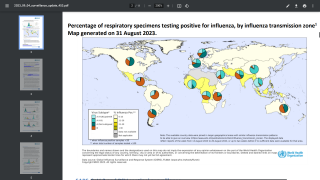Enhancing Indoor Ventilation Reduces Respiratory Virus Risk

It is essential to remember that various airborne viruses spread throughout the year, even as respiratory diseases continue to decline from their peak in late December 2023.
Viruses such as influenza and Respiratory Syncytial virus displayed both seasonal and regional outbreaks last winter.
Human respiratory viruses include a broad range of viruses transmitted mainly by infected persons.
The U.S. Centers for Disease Control and Prevention (CDC) confirmed on March 22, 2024, that everyone can protect themselves from respiratory illness by using core strategies like vaccination.
The CDC says that Improving ventilation is another core strategy that can reduce our risk of catching or spreading respiratory viruses from cold winters to hot summers.
However, people can still get sick after ventilating an indoor space, so it is essential to use ventilation as part of a multi-layered approach to protect ourselves against getting sick.
The fewer viruses in the air, the better. Improving ventilation can help you reduce virus levels in your home and reduce the chances that the virus will spread.
The CDC wrote, 'We can improve indoor air quality by increasing airflow and cleaning the air. Making ventilation improvements in your home or building can increase the delivery of clean air and reduce the concentration of viruses in indoor spaces. Improved ventilation can be anything from easy actions such as opening windows to system upgrades.'
'Ventilation systems work in different ways: They can bring fresh, outdoor air into rooms, filter the air, or treat the air. They also move air around, reducing stagnant air pockets where viral particles might accumulate.'
The CDC offered these tactics to enhance air quality:
- Bringing fresh, outdoor air indoors helps keep virus particles from accumulating in the indoor air.
- Open doors and windows as much as possible to bring fresh outdoor air.
- Ensure your home heating, ventilation, and air conditioning systems operate as designed.
- Air purifiers with high-efficiency filters remove germs from the air.
- UV air treatment systems can kill germs in the air.
- Portable CO2 monitors can help determine how fresh the air is in rooms. Readings above 800 parts per million suggest that more fresh outdoor air may need to be brought into the space.
A complete list of tips for year-round ventilation is posted at this CDC link.
Our Trust Standards: Medical Advisory Committee
























